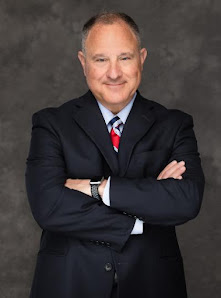The 46th Execution of 2025
Tennessee
executed Harold
Wayne Nichols by lethal injection on December 11, 2025 in Nashville for the 1988
rape and murder of Karen Pulley, a 20-year-old student at Chattanooga State
University, reported The Associated Press.
Nichols,
64, had confessed to killing Pulley as well as raping several other women in
the Chattanooga area. Although he expressed remorse at trial, he admitted he
would have continued his violent behavior had he not been arrested. He was
sentenced to death in 1990.
“To the
people I’ve harmed, I’m sorry,” Nichols said in his final statement. Before
Nichols died, a spiritual adviser spoke to him and recited the Lord’s Prayer.
They both became emotional and Nichols nodded as the adviser talked, witnesses
said.
Media
witnesses reported that a sheet was pulled up to just above Nichols’ waist and
he was strapped to a gurney with a long tube running to an IV insertion site on
the inside of his elbow. There was a spot of blood near the injection site. At
one point he took a very heavy breath and his whole torso rose up. He then took
a series of short, huffing breaths that witnesses said sounded like snorting or
snoring. Nichols’ face turned red and he groaned. His breathing then appeared
to slow, then stop, and his face became purple before he was pronounced dead,
witnesses said.
Nichols’
attorneys unsuccessfully sought to have his sentence commuted to life in
prison, citing the fact that he took responsibility for his crimes and pleaded
guilty. His clemency petition stated “he would be the first person to be
executed for a crime he pleaded guilty to since Tennessee re-enacted the death
penalty in 1978.”
The U.S.
Supreme Court declined to issue a stay of the execution on Thursday.
In a recent
interview, Pulley’s sister, Lisette Monroe, said the wait for Nichols’
execution has been “37 years of hell.” She described her sister as “gentle,
sweet and innocent,” and said she hopes that after the execution she’ll be able
to focus on the happy memories of Pulley instead of her murder.
Jeff
Monroe, Lisette Monroe’s husband and Pulley’s brother-in-law, said the family
“was destroyed by evil” the night she was killed.
“Taking a
life is serious and we take no pleasure in it,” he said during a news
conference following the execution. “However, the victims, and there were many,
were carefully stalked and attacked. The crimes, and there were many, were
deliberate, violent, and horrific.”
Pulley,
who was 20 when she was killed, had just finished Bible school and was
attending college in Chattanooga to become a paralegal, Jeff Monroe said.
“Karen was
bubbly, happy, selfless, and looking forward to the life before her,” he said.
Nichols
has seen two previous execution dates come and go. The state earlier planned to
execute him in August 2020, but Nichols was given
a reprieve due to the COVID-19 pandemic. At that time, Nichols had
selected to die in the electric chair — a choice
allowed in Tennessee for inmates who were convicted of crimes before
January 1999.
Tennessee’s
lethal injection protocol in 2020 used three different drugs in series, a
process that inmates’ attorneys claimed was riddled with problems. Their
concerns were shown to have merit in 2022, when Gov. Bill Lee paused
executions, including a second execution date for Nichols. An independent
review of the state’s lethal injection process found that none of the
drugs prepared for the seven inmates executed in Tennessee since 2018 had been
properly tested.
The
Tennessee Department of Correction issued a new
execution protocol in last December that utilizes the single
drug pentobarbital.
Attorneys for several death row inmates
have sued over the new rules, but a trial in that case is not
scheduled until April. Nichols declined to chose an execution method this time,
so his execution will be by lethal injection by default.
His
attorney Stephen Ferrell explained in an email that “the Tennessee Department
of Correction has not provided enough information about Tennessee’s lethal
execution protocol for our client to make an informed decision about how the
state will end his life.”
Nichols’
attorneys on Monday won a court ruling granting access to records from two
earlier executions using the new method, but the state has not yet released the
records and says it will appeal. During Tennessee’s last execution in
August, Byron
Black said he was “hurting so bad” in his final moments. The state has
offered no explanation for what might have caused the pain.
Many
states have had difficulty obtaining lethal injection drugs as anti-death
penalty activists have put pressure on drug companies and other suppliers.
Between the shortages and legal challenges over botched executions, some states
have moved to alternative methods of execution including a firing
squad in South Carolina and nitrogen
gas in Alabama.
Including
Nichols, a total of 46
men have died by court-ordered
execution this year in the U.S.
To read more CLICK HERE








